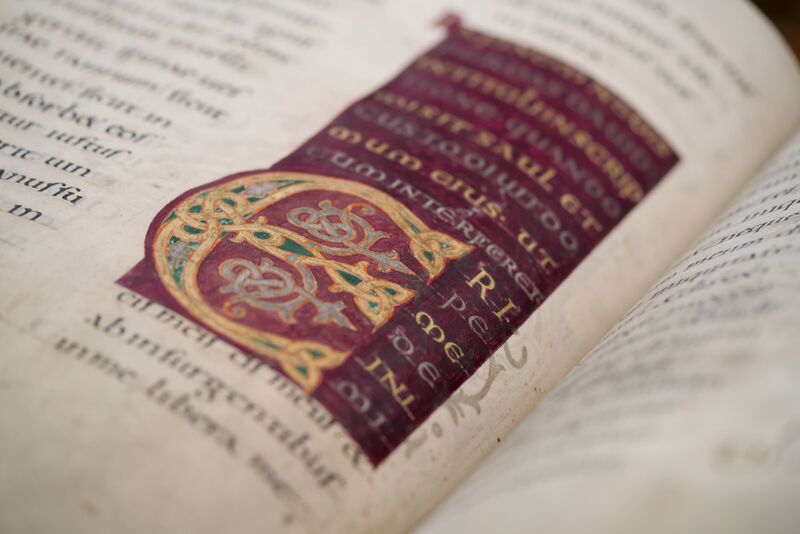Abbey of St Gall
The Abbey of St Gall – Canton government, Bishop and Carolingian manuscripts under a single roof
In 1983, the Abbey of St Gall, the Convent of St John at Müstair and the Old Town of Bern were the first cultural heritage sites in Switzerland to be included in the UNESCO World Heritage list. A decisive factor in the choice of St Gall was the link between the baroque ensemble and a tradition dating back to the 8th century. The latter hardly shows in the architecture but is reflected in the prolific holdings of the Abbey Archives and Abbey Library. St Gallen primarily owes its library – one of the oldest and richest in the world – to its celebrated status in art history.
The baroque buildings at St Gall were the crowning glory of a monastic culture with roots stretching back more than a thousand years. They sprouted from a community of hermitages established by the missionary Irish monk Gall, who withdrew in 612 to the untamed mountain valley of the River Steinach. A century later, his cell had become the embryo of a new monastic convent under Abbot Otmar. In 747 the monastery, now fully developed, adopted the Rule of St Benedict. A hundred years after Otmar, in the early 9th century, Abbot Gozbert presided over the dawn of a «golden age» at the abbey. He had a new complex built, and around 820 the Abbot of Reichenau helped by giving him the famous Plan, an ideal layout for an abbey that Gozbert tailored to the situation in St Gall. This unique architectural drawing is an explicit component of the UNESCO World Heritage, which likewise includes the substantial holdings, largely local in origin, of early medieval manuscripts and deeds, and one the world’s biggest collections of Irish codices.
Later in the Middle Ages the artistic and political significance of the abbey waned, but the town born in its shadow flourished and acquired greater economic power. Even before the Reformation, which also split the two entities along denominational lines, the town had established its independence from the abbey. In these difficult times, abbot Ulrich Rösch (1463–1491) consolidated the estates in his principality (between Wil and Rorschach) and purchased Toggenburg in order to create the baroque abbey state, a territory governed by an absolutist overlord within the Old Swiss Confederacy. The baroque abbey complex is an expression of this dual function as an ecclesiastical and secular hub.
In 1805 the abbey was supplanted by the newly created canton. Since that time, the abbey complex has accommodated the government and administration of the Canton of St Gall as well as the leader and administration of the diocese of the same name founded in 1823 (originally the double diocese of Chur and St Gall), which acquired the former abbey church as a worthy cathedral.
Extract from: Flury-Rova, Moritz: Welterbestätte Kloster St.Gallen: der Stiftsbezirk St.Gallen – Kantonsregierung, Bischof und karolingische Handschriften unter einem Dach. In: UNESCO-Welterbe, 2004, pp. 143–148.
